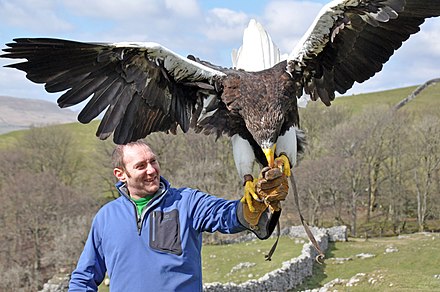Steller’s sea eagles (Haliaeetus pelagicus) are one of the largest and most powerful birds of prey in the world, known for their impressive size, strength, and adaptability to harsh winter conditions. These majestic birds are found primarily in the far eastern regions of Russia, where they face the challenge of surviving in snowy environments. In this blog post, we will explore the various ways in which Steller’s sea eagles are equipped to thrive in snowy conditions.
Insulation and Feathers
One of the key adaptations that allow Steller’s sea eagles to survive in the snow is their thick layer of down feathers. These feathers provide excellent insulation, trapping heat close to the bird’s body and protecting it from the cold temperatures. The eagles’ feathers are also water-resistant, which helps them stay dry and maintain their body temperature even in wet, snowy conditions.
Powerful Beak and Talons
 Image source: stellers sea eagle
Image source: stellers sea eagle
Steller’s sea eagles are equipped with a powerful hooked beak and long, sharp talons that are well-suited for hunting and tearing prey in snowy environments. These specialized tools allow the eagles to effectively capture and consume a variety of prey, including fish, small animals, and carrion, even when the ground is covered in snow.
Keen Eyesight
Another advantage that Steller’s sea eagles possess is their exceptional eyesight. These birds can detect prey from hundreds of feet above, even in snowy conditions where visibility may be reduced. This keen vision allows them to spot potential food sources and successfully hunt, even in the midst of heavy snowfall.
Hunting Strategies
Steller’s sea eagles employ a variety of hunting strategies to survive in snowy conditions. They may perch on a high vantage point and scan the area for prey, or they may soar and dive to catch fish or other animals in the water. Additionally, these eagles have been observed standing in shallow water or on the ice, waiting to snatch passing fish or other aquatic creatures.
Migratory Behavior
During the winter months, Steller’s sea eagles are known to migrate to Japan and Korea, where they can take advantage of milder weather and more abundant food sources. This migratory behavior allows the eagles to avoid the harshest winter conditions in their breeding grounds and increase their chances of survival.
Nest Productivity and Chick Survival
While Steller’s sea eagles are well-adapted to survive in snowy conditions, their nest productivity and chick survival can be impacted by factors such as snow depth and resulting floods. Heavy snowfall and flooding can make it difficult for the eagles to access food sources and can also threaten the safety of their nests and young.
Threats and Conservation Efforts
Despite their impressive adaptations, Steller’s sea eagles face a number of threats, including habitat loss, hunting, and the impacts of human activities such as fishing and caviar harvesting. Conservation efforts are underway to protect these magnificent birds and ensure their long-term survival in the face of these challenges.
In conclusion, Steller’s sea eagles are remarkably well-equipped to survive in snowy conditions, thanks to their thick insulating feathers, powerful hunting tools, and keen eyesight. While they face some challenges related to nest productivity and chick survival, these eagles have demonstrated their resilience and ability to thrive in even the harshest of winter environments.
References:
- Steller’s sea eagle – Wikipedia. Retrieved from https://en.wikipedia.org/wiki/Steller%27s_sea_eagle
- Steller’s Sea Eagle | National Geographic. Retrieved from https://www.nationalgeographic.com/animals/birds/facts/stellers-eagle/
- How Sea Eagles Survive Winter in Hokkaido, Japan | Britannica. Retrieved from https://www.britannica.com/video/180347/sea-eagle-Steller
- Steller’s Sea-eagle | San Diego Zoo Animals & Plants. Retrieved from https://animals.sandiegozoo.org/animals/stellers-sea-eagle
- How red-crowned cranes and Steller’s sea eagles survive winter. Retrieved from https://www.britannica.com/video/180350/Steller-sea-eagles-cranes-food-Hokkaido-island

